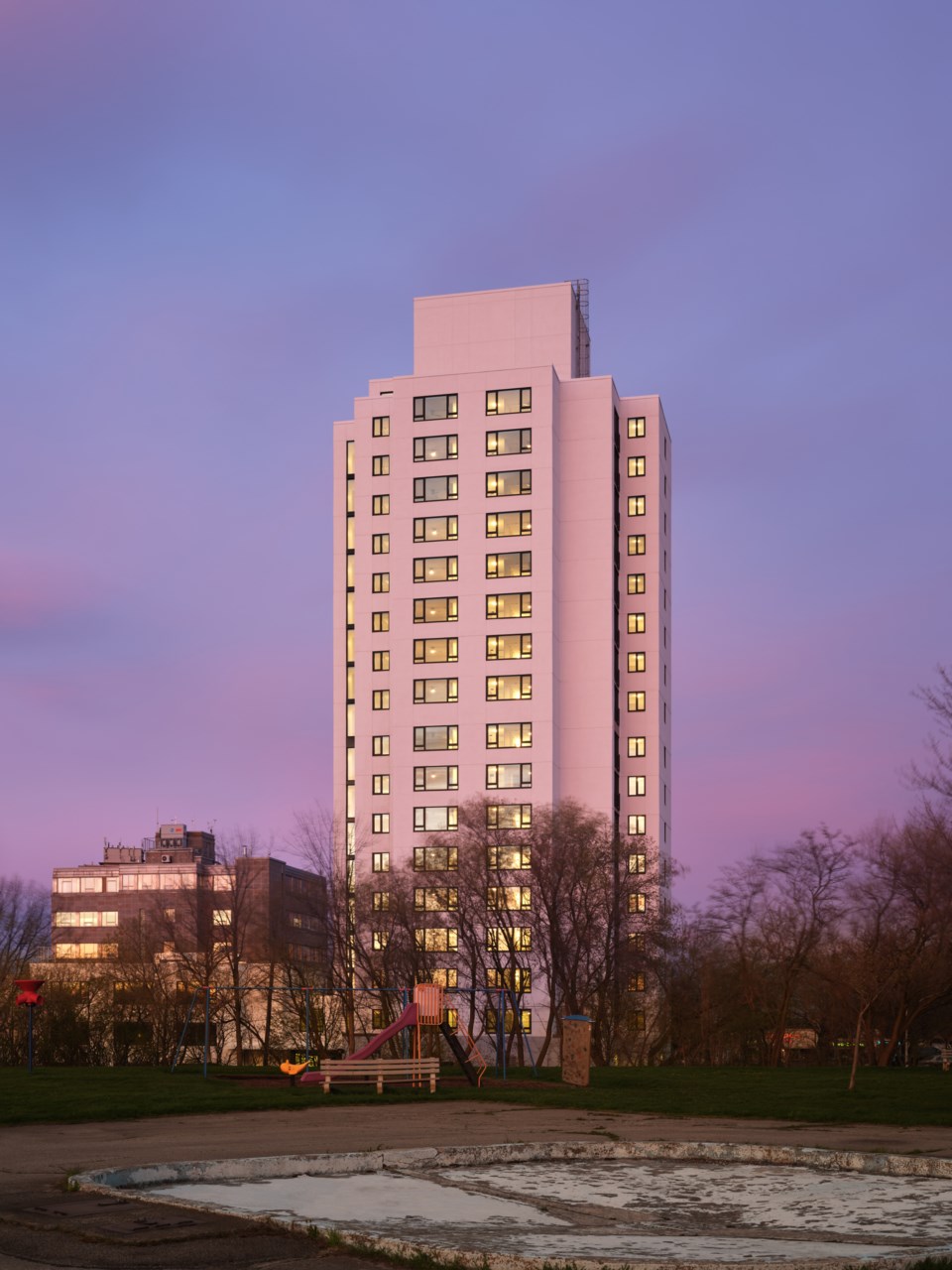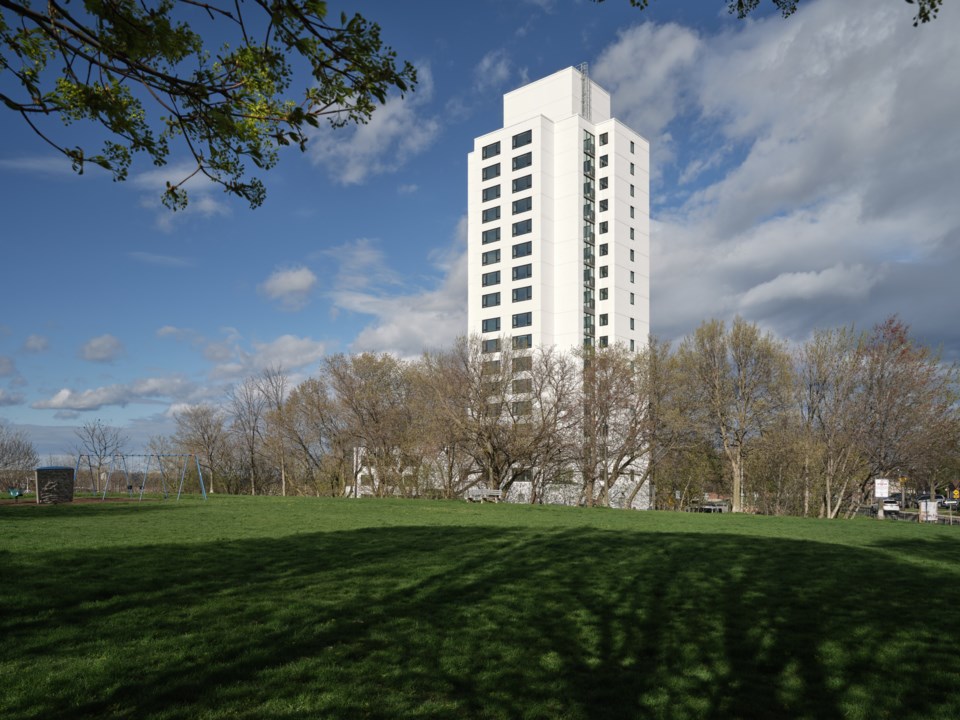The operation of buildings accounts for roughly 28% of global energy-related greenhouse gas emissions, so if countries and companies are going to meet the climate change commitments they have made, building owners will need to retrofit and decarbonize tens of thousands of buildings across North America.
While emissions from new buildings will be tackled through increasingly stringent energy codes and regulations, countries will not meet their goals if they do not address the existing building stock. “There are hundreds of millions of square feet of space that need to be retrofitted,” says Sudbury, Ontario native Mark Henderson, PCL’s manager of Sustainable Retrofits and Decarbonization. “When you break that down into a number of projects per year, if we want to meet commitments that have been made, it’s a staggering number.”

An opportunity for building owners
Many nations, companies and communities have made commitments to meet net-zero emissions by 2050. Building codes and performance standards are becoming more stringent and the use of efficient building technologies is accelerating, but the sector needs rapid change if these commitments are to be met.
While the scale of the challenge is massive, so are the opportunities for owners to add value and build resilience into their asset portfolios. For building owners in Northern Ontario, retrofits can be key to maintaining a competitive edge with a profitable, resilient portfolio because they can improve a building’s market value and the rents it can command.
Evidence suggests that so-called “brown discounts” on older buildings that have not been retrofitted can be as much as 30%, negatively impacting a real estate portfolio.
And tenants are demanding sustainable buildings. A 2023 report from Deloitte identified sustainability — or lack thereof — as a deal-breaking issue for many tenants, and 58% said they would look for alternative leases if their existing landlord failed to meet net-zero goals. Nearly half said they would look for early lease termination in that scenario.
PCL’s Four Ds Approach: The journey to net zero
Even though retrofitting a building to make it more sustainable is a smart business move, it can be an overwhelming process.
This is where PCL Construction brings its greatest value to clients. PCL’s experience with retrofits, combined with its experience with advanced preconstruction, estimating, budgeting, scheduling, logistics and risk mitigation, drives value and delivers returns.
With over a decade of experience delivering decarbonization projects, PCL has cultivated a unique team of in-house experts in sustainability, building envelope engineering, building systems engineering, advanced technology, lean methods and data analytics. Early collaboration with PCL’s in-house experts yields a decarbonization retrofit process informed by experience and technology.
“If we can get in early and understand what’s really driving the client to make these changes, we can provide great value,” says Henderson. “We can conduct a market analysis, perform building condition assessments and take other proactive steps that can help the client make the right choice and get the best possible return on investment for the decarbonization project.”
Every journey on the road to revitalizing an underperforming asset and building a resilient, net-zero portfolio is unique and requires a customized strategy and approach, informed and supported by the “four Ds” of PCL’s retrofit approach: demand, data, decisions and delivery.
Demand: Understand the market and regulatory framework
The profitability of real estate portfolios across the economy has been increasingly challenged by assessments of carbon pollution from buildings. With pollution (primarily CO2) being taxed, clients are taking a deeper look at the short- and long-term costs associated with deep retrofits.
Regardless of the targeted performance or certification measure, PCL can evolve the process to achieve success.
As solution providers, PCL can collate, analyze and synthesize current, reliable market data into actionable recommendations. They can:
- Undertake total building and cost-benefit assessments;
- Build budgets and support pro forma development across your asset portfolio; and
- Answer your questions and provide expert input and support as needed.
Data: What is your building telling you, and what do you want to know?
Opportunities to collect data (using wires, sensors and software) appear early in retrofit planning. PCL can reveal what your building is saying and plan for how it can communicate with you in the future.
Good retrofits start with accurate measurement of a building’s health and performance, and the development of an energy model and design plan. Ready to contribute at this early stage, PCL contributes accurate and actionable building performance data and leverages building systems, IoT sensors and more to inform the progression of energy models, audits, and carbon roadmaps.
Looking ahead to the finished product, PCL recognizes that a defining feature of modern, decarbonized real estate assets is live performance data. A plan for tracking, collecting and analyzing this data is a top priority for retrofit planning. PCL can facilitate and participate in robust conversations about the flow of performance metrics to help digitize client Environmental, Social and Governance (ESG) efforts. They can identify and prioritize the KPIs targeted by project certifications (LEED, Passive House, etc.) and work to demystify client reporting needs (ESG reporting, EnergyStar, etc.).
Decisions: Strategies for decarbonization
Armed with an understanding of your business priorities and market demand, and with critical data collected and analyzed, you are now positioned to generate retrofit and decarbonization strategies and options.
PCL can assess comprehensive costed options, evaluate building and envelope design, and validate cost-benefit analyses. They can generate short-, medium- and long-term retrofit and decarbonization options, including proposed budgets, schedules, phasing and sequencing options as needed.
Delivery: Your partner on the retrofit and decarbonization journey
As your decarbonization construction manager and a partner on your road to net zero, PCL brings together the right team of experienced and specialized consultants and in-house experts to join forces with their retrofit- and decarbonization-savvy constructors ready to customize and streamline the implementation, measuring and monitoring of your preferred strategic options. They deliver connected, ready-to-operate, high-performance, low-carbon projects. They do this on time and on budget, all with a commitment to safety and quality.
Success is celebrated when performance is proven through the comprehensive commissioning plan developed at the project outset and refined through construction. With operators trained, energy data flowing and networks connected, they help clients transition seamlessly to efficient, effective operations.
“Meeting the new demand for retrofits and decarbonization is going to require new perspectives and strategies if we are going to meet targets for carbon reduction,” says Henderson, “but through strategic partnerships, investments in technology and proven experience, PCL is helping chart the road to net zero.”
To learn more about retrofits and other construction services for buildings in Northern Ontario, contact PCL Constructors Northern Ontario Inc., located in Sudbury, Ontario at 705-995-2225 or visit them online.
